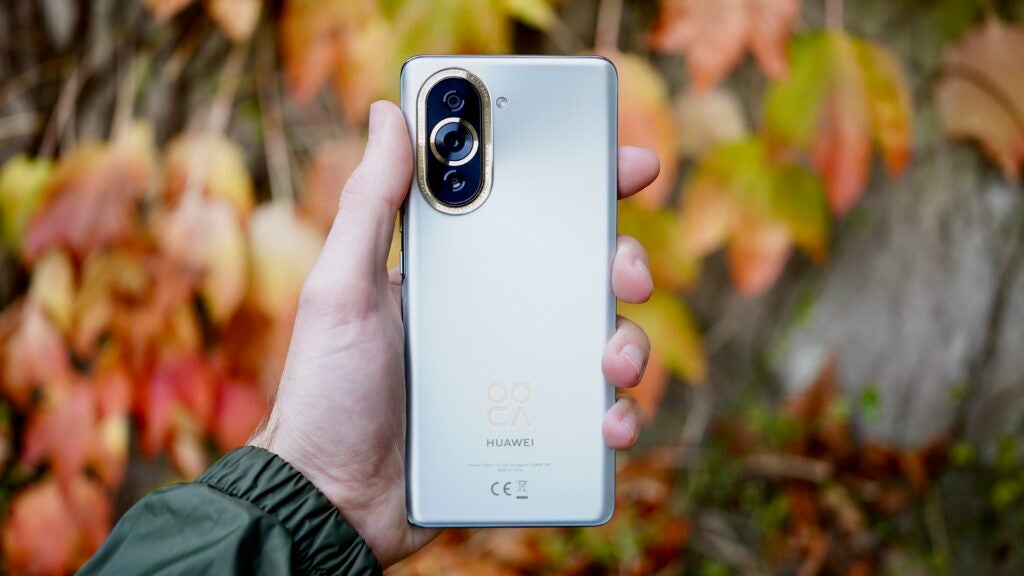The Huawei Nova 10 Pro has a classy design, an excellent screen, and a strong main camera, but ongoing app issues and several uncompetitive components leave it well outside of the mid-range conversation.
Pros
- Strong main camera
- Excellent selfies
- Proper facial recognition
Cons
- Crippling lack of Google play support
- No 5G
- No wireless charging
-
Dual front sensor cameraCombines 60MP main with 8MP zoom -
Huawei SuperchargeThe phone can charge at up to 100W -
EMUI 12 SoftwareThe phone runs a customised version of open source Android that doesn’t have access to common Google services like the Play Store. This is replaced with Huawei’s own App Gallery.
Introduction
The Huawei Nova 10 Pro offers a couple of strong cameras, a premium design, and fast charging for a price that pitches it just above the mid-range and just below the usual mainstream flagship brigade.
Besides this unusual positioning, there’s a huge elephant in the room. This is a Huawei phone, which means that it’s fundamentally hamstrung from a software perspective. In other words, it’s starting from way behind virtually every other smartphone on the market.
The question is, to what degree can Huawei’s hardware team mitigate the effect of those ongoing software issues? Also, does a price of £639.99 mean that it undercuts the flagships, or is it overpriced next to the mid-rangers?
Design and screen
- Distinctive Star Orbit Ring Design
- Dual-curved display
- Excellent 6.78-inch AMOLED display
Just as we have to acknowledge that Huawei has a gaping problem with software, so too should we highlight how consistently great at hardware it is. You might not like the Huawei Nova 10 Pro’s flashy design, but it’s undeniably got that premium vibe. From its dual-curved display to its just-so 7.9mm-thick chassis and 191g weight, it just feels good in the hand.
What really catches the eye here is something Huawei calls its “Star Orbit Ring Design”, which refers to the phone’s distinctive camera module. This two-tiered lozenge-shaped module is framed by a gold-tinted base, whether you choose the Starry Silver or Starry Black model.
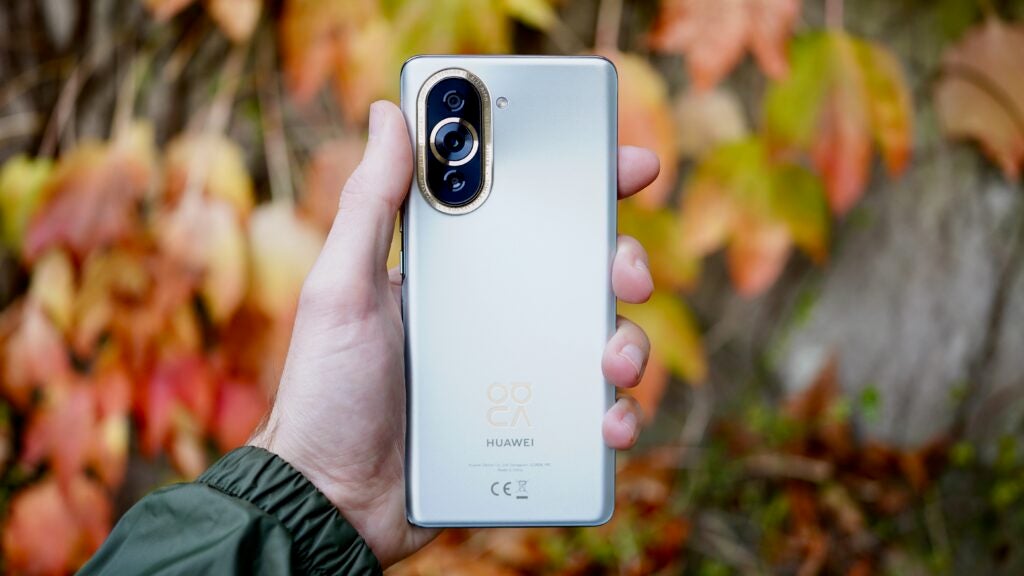
I found the module to be a little chintzy for my tastes, but then it’s clearly not designed with creaky oldsters in mind. This is a phone for bright young teens and 20-somethings, as evidenced by the focus on selfies with that dual front camera system.
Talking of which, the other distinctive design feature here is an extra-wide island notch. It’s a little unsightly, and leads to some awkwardly squashed UI elements, but it also enables a fully functioning facial recognition system, which is still way too rare outside of Apple’s iPhone ecosystem.
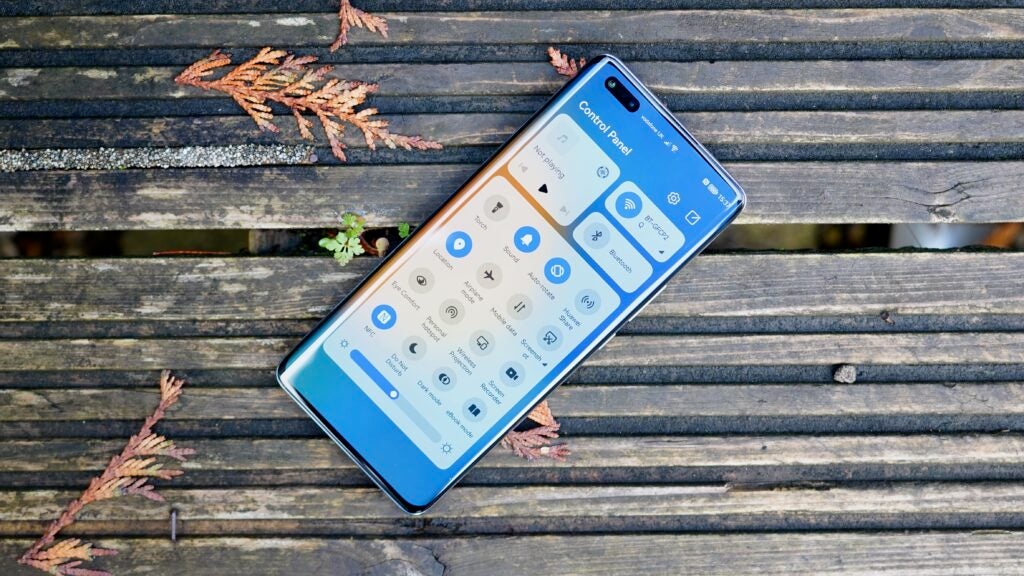
The display itself is an absolute peach. It’s a large 6.7-inch AMOLED with a sharp 1200 × 2652 resolution that falls somewhere between FHD+ and QHD+. Throw in a 120Hz refresh rate and a 300Hz touch sampling rate, and there really is nothing to criticise beyond that intrusive display notch.
Some would argue that the time for dual-curved displays should have passed by now, but there are still plenty of flagship models hitting the market with just such a design feature. Huawei’s palm-rejection algorithms seem on point, so I never noticed any egregious false presses whilst holding the phone.
Colour accuracy is on point, with an average Delta E rating of 1.06 (close to 1 is ideal) in the Normal colour mode, and I measured a decent maximum brightness of 556 nits with autobrightness switched off.
Camera
- Fine 50MP mian camera
- Poor 8MP ultra-wide
- Strong dual selfie camera
It’s easy to forget given its recent travails, but Huawei has been right up there near the top of the camera quality tree for a number of years now. Sure enough, the Huawei Nova 10 Pro is capable of taking some superb shots.
More specifically, its 50-megapixel wide sensor captures extremely sharp, well exposed, and natural-looking shots in a range of lighting conditions. I was particularly taken with a relatively close-up shot of some pumpkins, with a level of focus, sharpness, and authentic colour that was nothing short of flagship-like.

Night mode shots are pretty decent too. I was impressed to see some of the brighter stars rendered faithfully in a couple of waterside shots on a particularly clear night.

It struggled a little more in the spaces in between the two extremes, such as in a dimly lit pub. But that’s the most challenging scenario for any smartphone camera these days.
As good as the Nova 10 Pro’s main camera is, its 8-megapixel ultra-wide isn’t anywhere close to the same level. There’s a pronounced drop off in detail and colour accuracy, with a pale, washed-out look compared to the main sensor. There’s a 2-megapixel depth sensor too, which aids with some decent portrait shots.

You don’t get a dedicated telephoto camera here, but that’s only really typical near the top of the market. As it is, the Nova 10 Pro’s sharp main sensor does a decent job of cropping in.
Strangely enough, you could argue that the main camera isn’t the headline act here. That would probably fall to the selfie camera, which is a dual-sensor affair.


It’s led by a 60-megapixel ultra-wide camera with dual-autofocus, and accompanied by an 8-megapixel portrait camera. They produce brilliantly sharp and rich selfies, with the extra wide option useful for group shots. Just stay away from the 2x zoom option (which look a little blurry) and the creepy-smooth Beauty effect in Portrait mode.
Performance
- Mud-range Snapdragon 778G chip
- No 5G
- Lack of Google services an ongoing problem
The Huawei Nova 10 Pro runs on a Snapdragon 778G 4G chip, which is a tad disappointing on a couple of levels. For one thing, there’s no 5G connectivity, which we’ve come to expect as a staple feature for phones of this price.
Also, while this is a decent mid-range chip, it’s a mid-range chip nonetheless. Variants of the chip appear in phones that retail for hundreds of pounds less than the Nova 10 Pro, such as the Honor 50 and the Nothing Phone (1).
When you compare its benchmark figures to a similarly priced phone like the Pixel 7, it falls a little short. We’re talking Geekbench 5 scores of 769 single-core and 2888 multi-core, a 3DMark Sling Shot score of 6303, and a 3DMark Wild Life score of 2478.
You won’t notice a huge shortfall in performance in daily use, however, with a consistently smooth response, quick unlock times, and reasonably snappy app boot up times.
The Nova 10 Pro backs this solid but unspectacular chip with a similarly sufficient 8GB of RAM, as well as an ample 128 or 256GB of internal storage.
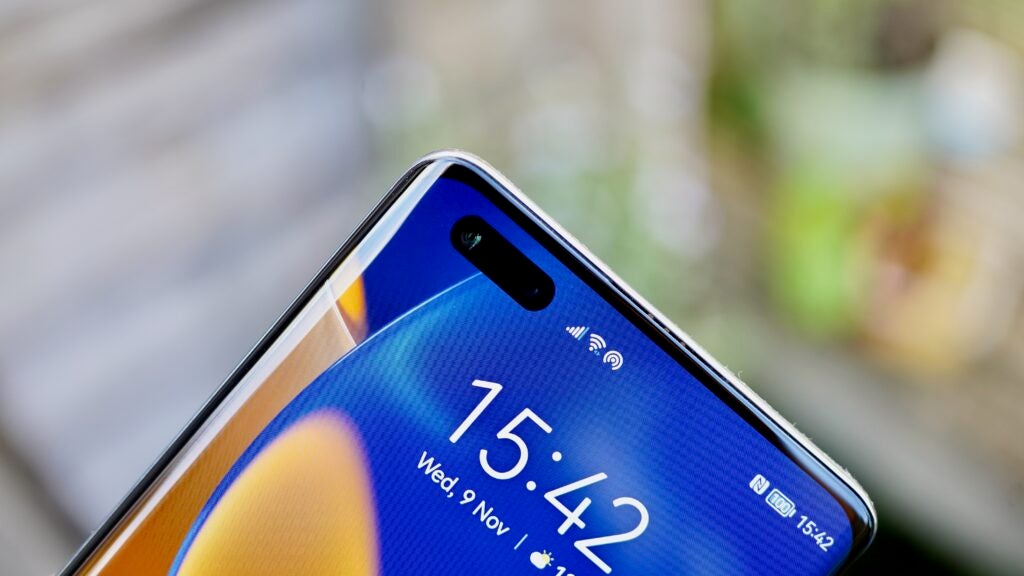
Performance is just about acceptable, but the day to day experience of running of the Huawei Nova 10 Pro is wholly unsatisfactory. That all comes down to EMUI 12, Huawei’s custom Android-based OS.
It’s not that Huawei’s heavily modified UI is especially objectionable on the surface. It’s quite similar to Xiaomi’s MIUI in a lot of ways, including its obvious debt to iOS, its extensive Themes store, and its slightly overbearing level of bloatware.
The big issue here is the lack of Google Mobile Services support, which means that you don’t get any of that sweet Google grounding for any of your apps. At a base level this means no pre-installed Google apps, and no access to the Google Play Store. Instead, you have to rely on Huawei’s own AppGallery, which doesn’t include a lot of the usual suspects.
Huawei has partially addressed this in recent years with its Petal Search tool, which scours the various smaller and much less official app stores on the web for your desired app. Huawei insists that this process is secure, but the clunkiness of the whole process of acquiring apps is far from reassuring.
You’ll also find that some of the non-Google apps that you are able to track down still don’t run properly. While I was able to download and use WhatsApp, for example, I was unable to access my chat backup.
Battery life
- 4500mAh battery not the biggest
- Good for a day in most situations
- Rapid 100W charging
The Huawei Nova 10 Pro runs on a 4500mAh battery, which seems slightly small for a premium(ish) phone with such a large and capable display.
I wasn’t exactly wowed by the phone’s stamina, though it’s not a particular point of concern. After a day of what I’d term moderate usage (around 3 hours and 30 minutes of screen on time), I’d be left with around 40% left in the tank. In a more direct test, an hour of Netflix streaming sapped 7% of a charge, which is respectable.
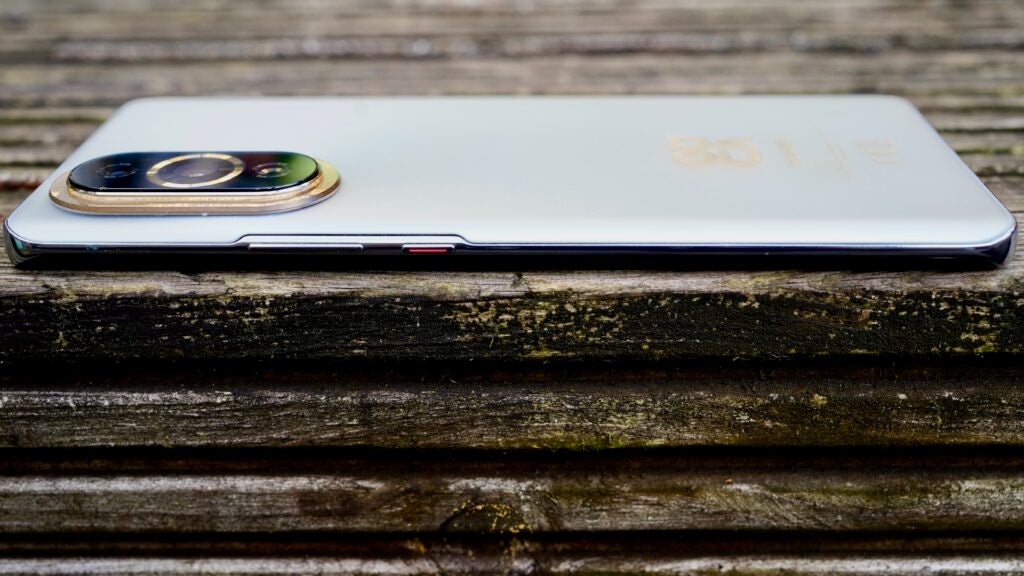
Huawei lends a little reassurance with its wired charging provision, with a 100W ‘Supercharge Turbo’ plug included in the box. It was sufficient to get me from an enforced low-power shutdown to 75% in just 15 minutes, and can manage a full charge in around 20 minutes.
There’s no wireless charging here, which feels like a bit of an omission. You can spend slightly less on the Pixel 7, or way less on a Nothing Phone 1, and enjoy wireless charging.
Should you buy it?
You want a top display for less than £700. The Huawei Nova 10 Pro screen is big, bright, sharp, and responsive. There aren’t many better displays out there for less than £700.
You’re after strong performance. Whether you’re a gamer or you just want the fastest phone for the money, the Huawei Nova 10 Pro will come up short.
Final Thoughts
For all its undeniable strengths, the simple fact remains that you probably shouldn’t buy the Huawei Nova 10 Pro. The lack of Google Mobile Services is simply too prohibitive to overlook, making too many everyday activities into a chore.
Still, credit where it’s due – the Nova 10 Pro’s display is superb. It’s large, bright, sharp, fluid, and extremely responsive, not to mention colour-accurate. The main camera, too, is capable of genuine greatness, while you’ll struggle to find a better selfie camera for the money.
Even when placing the software situation aside, however, the Huawei Nova 10 Pro is far from a home run. Its ultrawide camera is poor, it lacks both 5G and wireless charging, and its performance is underwhelming.
All in all, the Huawei Nova 10 Pro is a phone that makes a strong first impression, but it has too many flaws (one of which is fatal) to even be in the conversation as a mid-range option.
FAQs
No, it cannot connect via 5G
It’s available in Starry Silver (as shown in the review) and Starry Black
Jargon buster
5G
Offering faster download and upload speeds when compared to 4G. Great for game streaming and HDR video playback. Not supported everywhere yet and speeds vary wildly.
OLED and AMOLED
Types of displays that use self-lighting pixels to provide greater contrast and more vibrant colours than a typical LCD display, as well as sharper blacks.

